Plastic is one of the most enduring products that humanity has created, if not the most enduring. After all, it can take thousands of years for plastic to degrade, and now we’re learning that it’s likely that plastic doesn’t fully degrade at all. It breaks down into microplastics, which are often considered to be more detrimental to the health of humans and the natural environment than other types of plastic.
Thankfully, many people have become more aware of their plastic usage. This has led to lifestyle changes that result in reducing the use of plastics, especially single-use plastics, and an increase in the use of reusable and eco-friendly products. However, we have a long way to go when it comes to the care of our oceans. Plastics end up in the oceans in unbelievably large numbers every single year, which is rapidly leading to the death of many animals and plants. In fact, there are hundreds of species that are at risk of extinction because of plastic pollution in the ocean.
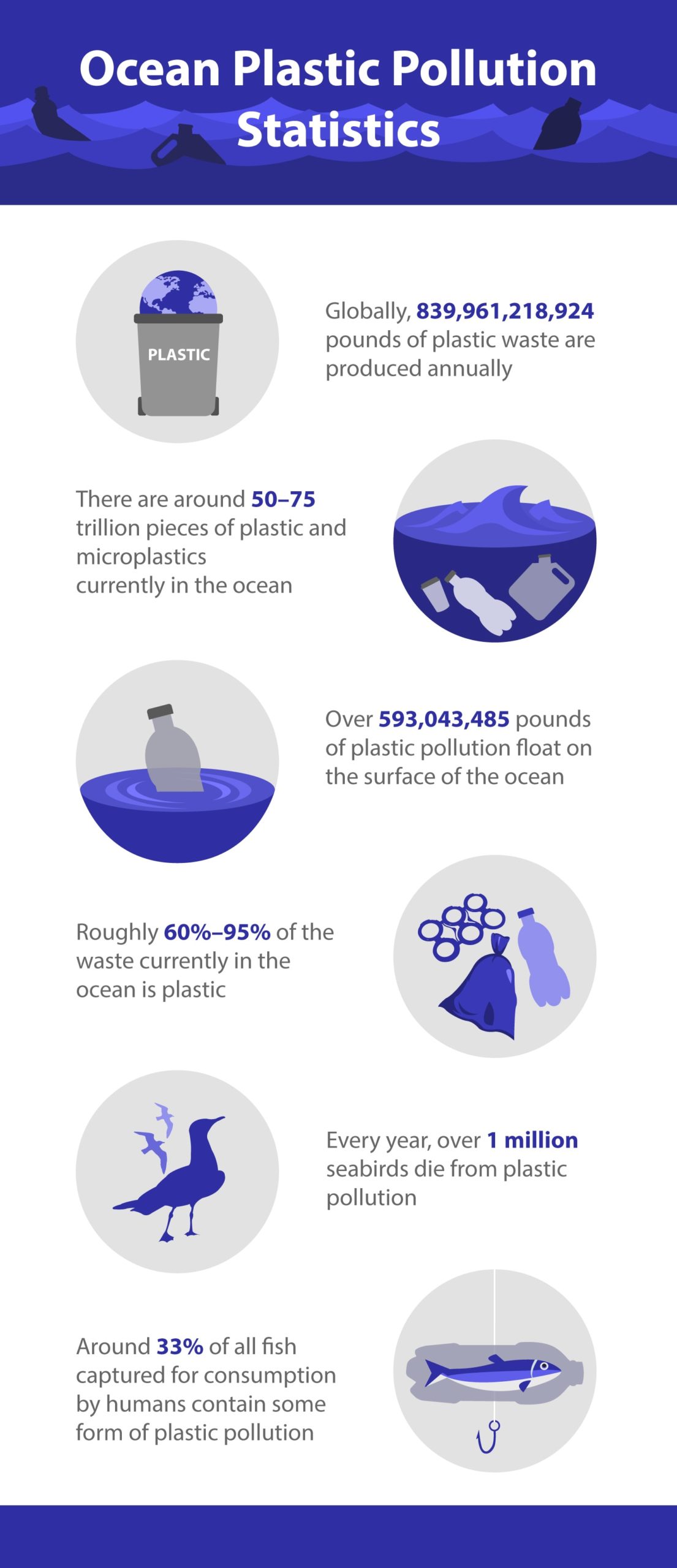

Plastic Manufacturing and General Ocean Plastic Pollution Statistics
- Globally, 839,961,218,924 pounds of plastic waste are produced annually.
- In just over 10 years, it’s believed that this number will have doubled.
- It takes approximately 8% of the global oil production to keep up with the world’s annual plastic production.
- Of the plastic waste produced annually, approximately 50%, or 419,980,609,462 pounds, is some form of single-use plastic.
- In the US, we throw out 1 billion plastic toothbrushes annually.
- We also throw away 2 billion plastic razors every year.
- In fact, Americans are responsible for approximately 185 pounds of plastic waste per person per year.
- In the last decade, the world has produced more plastic products than it had in the previous century.
- Less than 10% of the plastic products produced have ever been recycled.
- Approximately 12% of all plastics have been incinerated, which keeps them out of the oceans but still has detrimental effects on the environment.
- The manufacturing process used to create most plastics is also dangerous to the natural environment because it involves the use of fossil fuels.
- Not all plastic ends up in the oceans because of people littering or missing the trashcan. Many plastics and microplastics in the oceans are the product of irresponsible manufacturing processes.
- Other sources of plastics in the waterways are plastic waste washed away from landfills and plastic waste flushed down toilets, sinks, or tubs.
- The EPA has announced that almost 100% of all plastics humankind has ever created are still in existence. Any degradation outside of incineration that has occurred has resulted in the creation of microplastics.
- Most types of plastic take between 500-1,000 years to degrade. Even then, they form microplastics and do not fully degrade.
- Most of the clothing we manufacture and own contains plastic in some form. This includes polyester, nylon, and acrylic. In fact, 60% of the materials in clothing items are some form of plastic or microplastic.
- Microplastics are so prolific that they show up in very unexpected places, like salt, tap water, and beer.
- In 2020, we created 900% more plastic products than we did in 1980
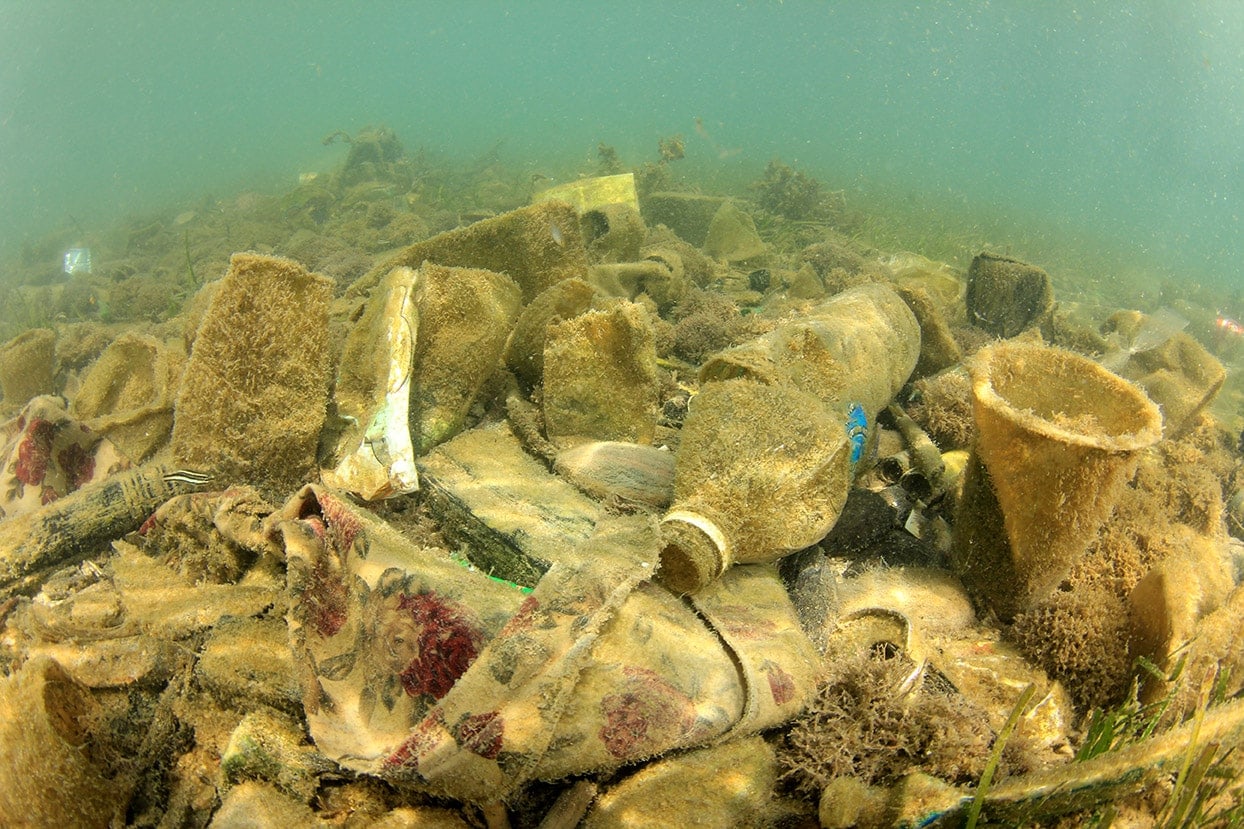

How Much Plastic Is in the Ocean in 2024?
- There are approximately 50-75 trillion pieces of plastic and microplastics currently in the ocean.
- Approximately 593,043,485 pounds of plastic pollution float on the ocean’s surface.
- Only around 1% of all plastic pollution in the oceans is on the surface. The other 99% stays below the surface.
- As of 2021, there are at least 363,762,732,605 pounds of plastic pollution in the world’s oceans.
- Globally, there are approximately 8 million pieces of plastic that enter the ocean every single day.
- The amount of plastic that enters the oceans annually is equivalent in weight to more than 26,000 Boeing 747 Jumbo Jets.
- An entire trash truck’s worth of plastic pollution makes it into the ocean every minute.
- Studies have shown that approximately 60-95% of the waste currently in the oceans is plastic waste.
- Approximately 20% of the plastic pollution in the oceans is from marine activities, like commercial fishing.
- There is currently a large floating island of trash in the Pacific Ocean called The Great Pacific Garbage Patch. It currently measures 617,763 square miles, which is larger than the entire state of Texas.
- The Great Pacific Garbage Patch is so dense that it blocks out sunlight, leading to the death of micro and macro ocean life.
- Plastic has been found up to 11 km, or almost 7 miles, deep in the ocean. The deepest part of the Mariana Trench is 11.022 km, which means that plastics have been found in the deepest part of the ocean, which is also the most unexplored place on the planet.
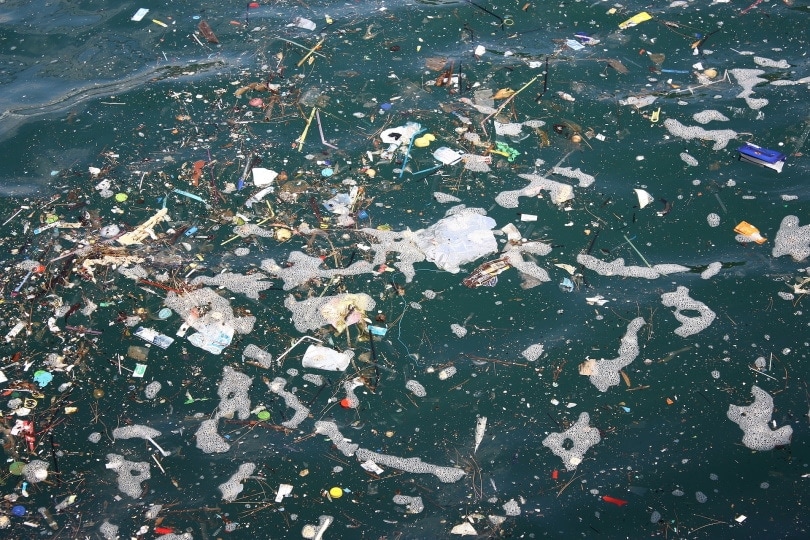

How Does Plastic Pollution Impact Living Things?
- Every year, 1 million seabirds die from plastic pollution.
- Of all seabirds found dead every year, the majority of them are found to have plastic in their stomach.
- Studies have indicated that around 60% of all seabirds have consumed plastic at some point.
- In fact, 44% of all known seabird species have been found with plastic in or on their bodies.
- Studies of baby sea turtles have indicated that almost 100% of all baby sea turtles have ingested plastic at some point in their life.
- Of the baby sea turtles found deceased in the last few decades, 100% of them have had plastic of some form in their stomachs.
- Studies have also indicated that around 50% of all sea turtles have consumed plastic at some point.
- Studies have found that 34% of deceased Leatherback sea turtles had plastic in their stomach.
- Sea turtles often mistake plastic bags for jellyfish, which is one of their favorite foods.
- In studies performed on mussels, 100% of them were found to have microplastics inside of them.
- Coral that comes into contact with plastic has an increased risk from 4% to 89% that the coral will develop infections or diseases.
- Small ocean animals aren’t the only animals at risk! The largest animal to have ever lived on the planet, the Blue Whale, is also susceptible to being killed from accidental ingestion of plastic pollution.
- 59% of whales that have been examined in the last few years had plastic in their bodies.
- Plastic consumption usually results in animals starving to death due to an inability to eat, or organ rupture due to blockages caused by the plastic.
- It’s estimated that in the North Pacific Ocean, fish consume between 24-48 million pounds of plastic every year.
- By 2050, it is believed that fish in the ocean will be outnumbered by pieces of plastic.
- One study found that approximately 25% of all fish in markets in California contained some type of plastic pollution. This is often plastic in the form of microplastics, which are then consumed by humans.
- Approximately 33% of all fish captured for consumption by humans contain some form of plastic pollution.
- Chemicals present in some types of plastics are capable of damaging human or animal bodies in ways like decreasing hormone levels and damaging reproductive ability.
- Some of the chemicals present in plastics are known carcinogens and can lead to cancers in humans and animals.
- It’s estimated that humans consume around 40 pounds of plastic in our lifetime.
- In the US, 93% of people tested, including children over the age of 6, were positive for the presence of BPA, which is a form of plastic.
- There are at least 700 species of marine animals that could go extinct due to ocean plastic pollution.
- Approximately 70% of the oxygen in the world is produced by marine sources, which are at risk due to excessive pollution blocking access to sunlight.
- Approximately 30% of the CO2 emissions produced in the world are absorbed by marine sources, but some of these sources are unable to absorb CO2 because of pollution.
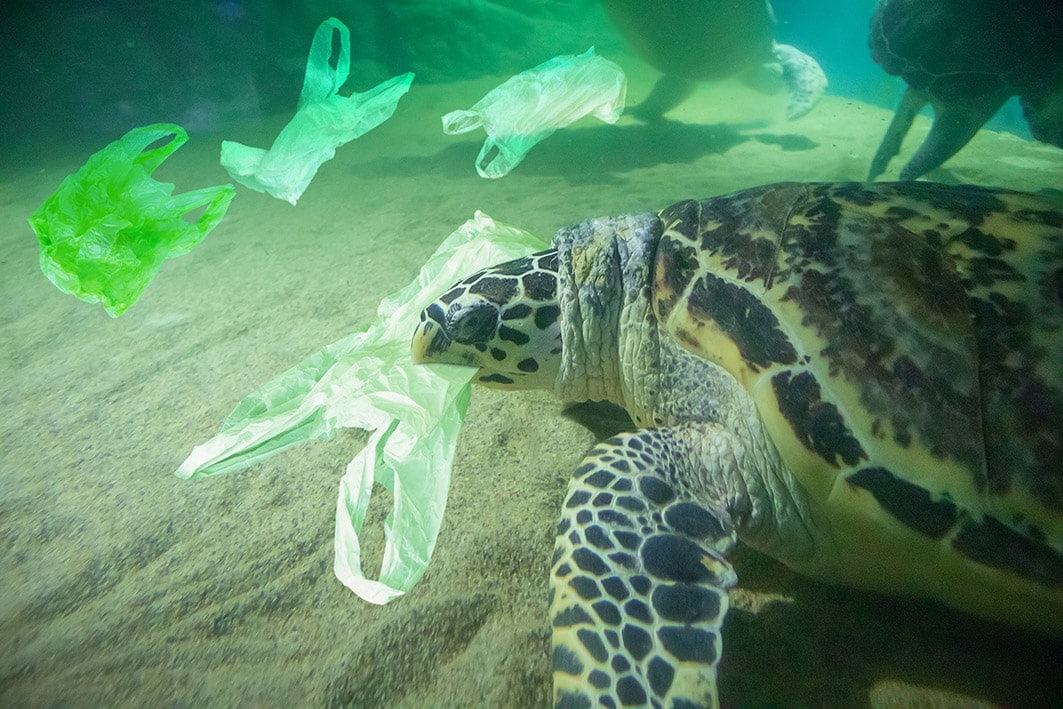

How Many Plastic Straws End Up in the Ocean?
- There are 8.3 billion plastic straws littering beaches across the world currently.
- Over 7 million of those straws are littering beaches in the United States.
- In the US, we discard 138 billion plastic stirrer straws annually.
- In the US, we use 50 million straws daily.
- Plastic straws only account for 1% of the plastic pollution in the oceans.
- Plastic straws are consistently one of the top 10 most commonly found plastic products found during beach cleanups.
- Although they’re made of plastic, straws are extremely difficult to recycle and almost always end up in landfills or waterways.
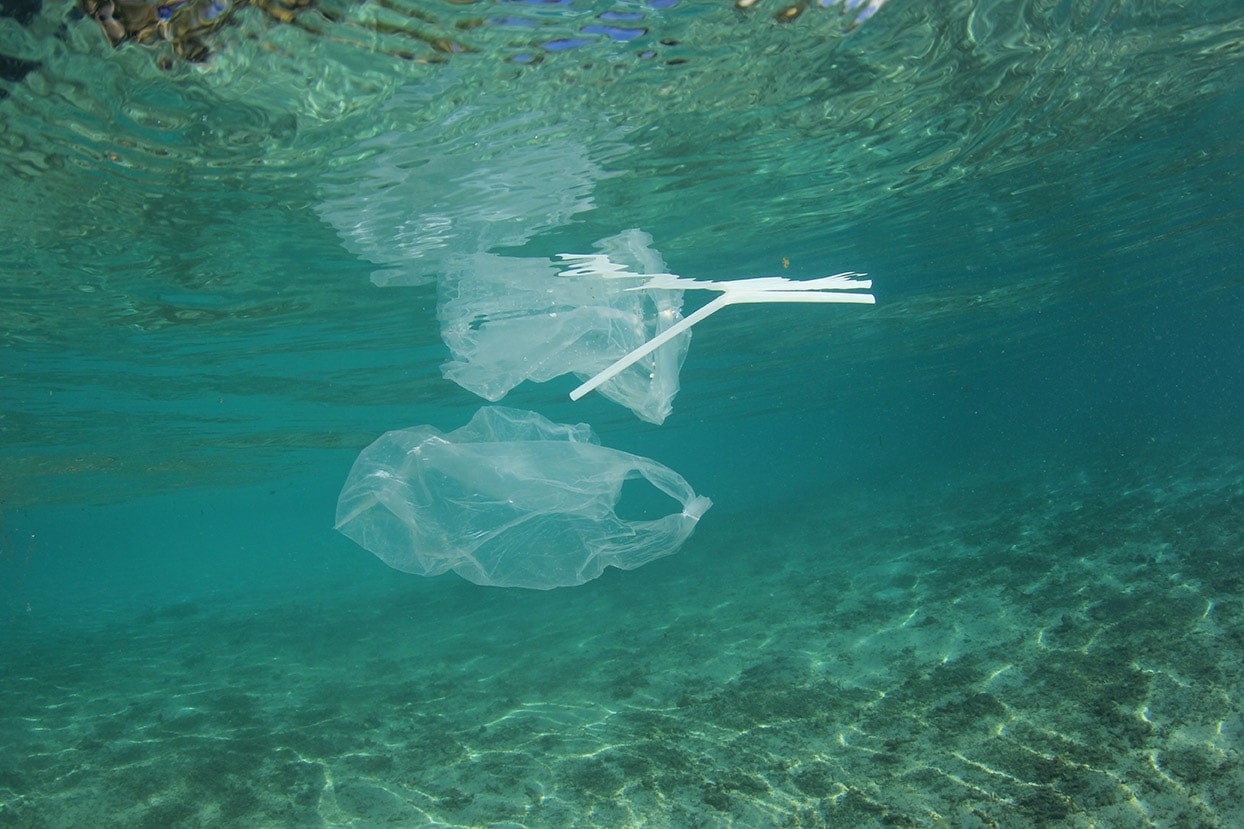

How Many Plastic Bottles Are in the Ocean?
- There are approximately 66 times more plastic bottles on the planet than there are people.
- Approximately 500 billion single-use plastic bottles are used globally every year.
- Just in the US, around 50 billion plastic water bottles are used annually.
- Approximately 35 billion of those water bottles are thrown in the trash instead of being recycled.
- When it comes to all litter pollution, plastic bottles account for 14%. This does not include bottle caps or plastic labels.
- For every plastic bottle of water produced, six times the amount of water in the bottle is used to manufacture the bottle itself.
- A single plastic bottle can take over 400 years to degrade in the ocean.
- Not even half of the disposable plastic bottles purchased annually are recycled.
- The other more than 50% of disposable plastic bottles that aren’t recycled end up in landfills or the world’s oceans.
- Of the disposable plastic bottles that were recycled, less than 10% of them were used to create new plastic bottles.
- A single 1-liter plastic bottle breaks down into such small pieces of microplastic that a piece of that bottle could end up on every mile of beach in the world.


How Many Plastic Bags Are in the Ocean?
- Globally, 500 billion to 1 trillion plastic bags are used annually, or between 150-300 plastic bags for every single person.
- Approximately 10% of the plastic bags manufactured annually end up in the oceans, or 50-100 billion plastic bags for every year that plastic bags have been manufactured.
- Annually, there are approximately 100-300 billion plastic bags that wind up in the oceans just because of the United States.
- It takes approximately 12 million barrels of oil to produce 100 billion plastic bags.
- The average amount of time that a single plastic bag is used is 12-15 minutes.
- The average amount of time it takes for a single plastic bag to degrade is 20-1,000 years.
- In the US, the average plastic bag usage is approximately 365 per person, or one plastic bag per person for every day of the year.
- The US’s usage of plastic bags stands in stark contrast to most other countries, like Denmark, where the average plastic bag usage per person averages out to a single plastic bag per quarter, or four bags per year.
- For every minute that passes, 1 million single-use plastic bags end up in the trash.
- If you were to connect every plastic bag used annually end to end, they would circle the planet 4,200 times.
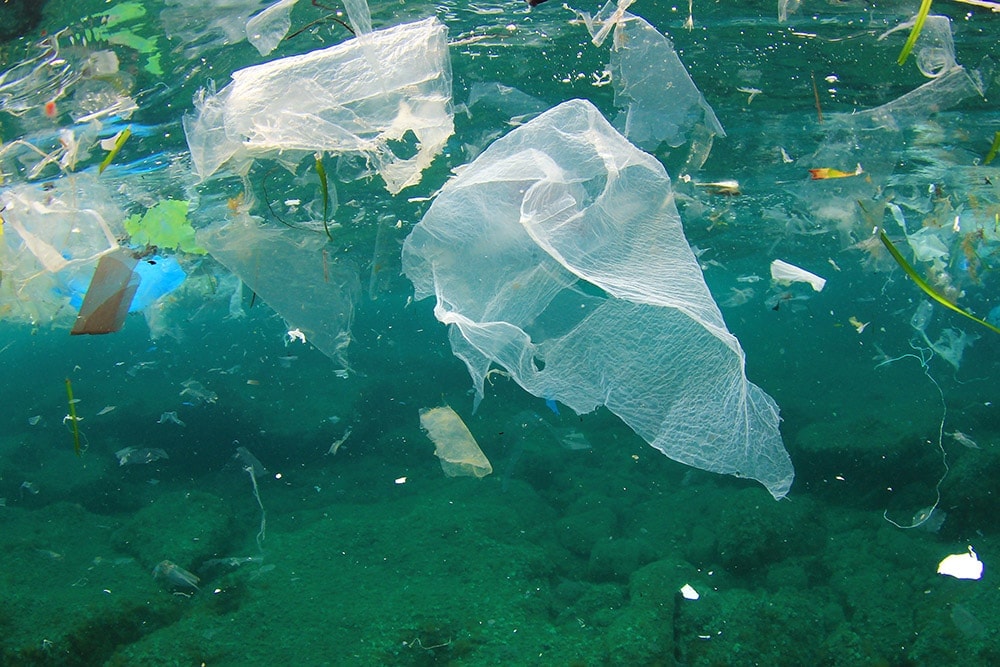

What Is the World Doing to Stop Ocean Plastic Pollution?
- Asian countries account for around 50% of the plastic pollution in the world’s oceans.
- Just under 20% of the plastic pollution in the world’s oceans is believed to come from the US, Canada, and Mexico. Europe is believed to account for approximately another 19%.
- The top five heaviest polluting countries in the world account for around 60% of all ocean plastic pollution. China is the worst contributor to this problem.
- The United States consistently makes it into the top 20 list of the world’s worst polluters.
- There are only 10 rivers in the world that account for 90% of the plastic pollution in the ocean that flows there from river sources. Of those 10 rivers, eight are located in Asia, and two are located in Africa.
- The European Union passed legislation in 2021 that bans the use or production of the top contributors to single-use plastics found on beaches, including plastic bags and straws.
- As of 2020, 127 countries had passed legislation regulating the use and manufacturing of single-use plastics, including plastic bags and cutlery.
- The US passed legislation in 2020 that requires manufacturers to take more responsibility for their plastic manufacturing processes and the usage of their products. This legislation was called the Break Free From Plastic Pollution Act.
- India plans to ban the use and manufacturing of all single-use plastics by 2022.
- Kenya has already passed legislation banning the use and manufacturing of all single-use plastic bags.
- In 2014, California became the first state in the nation that banned the use of single-use plastic bags.
- In 2019, Oregon followed suit by passing legislation that is still the most comprehensive plastic bag ban in the nation.
- In 2015, the Ocean Conservancy’s 2015 Coastal Cleanup resulted in 18 million pounds of trash being removed from beaches.
- Of the trash removed, seven out of the 10 most frequently collected items were plastic. These items were plastic lids, single-use plastic bags, other plastic bags, food wrappers, lids, plastic bottles, and straws.
- As of 2021, over half of the states in the US have passed some form of legislation limiting or banning the use or manufacturing of single-use plastics or Styrofoam.
- Harvard University scientists found a way to use shrimp shells to create a fully biodegradable type of plastic.
- A bacterial enzyme mutation was accidentally created by scientists and is capable of breaking down some types of plastics within hours. It is still under study for safety and efficacy.
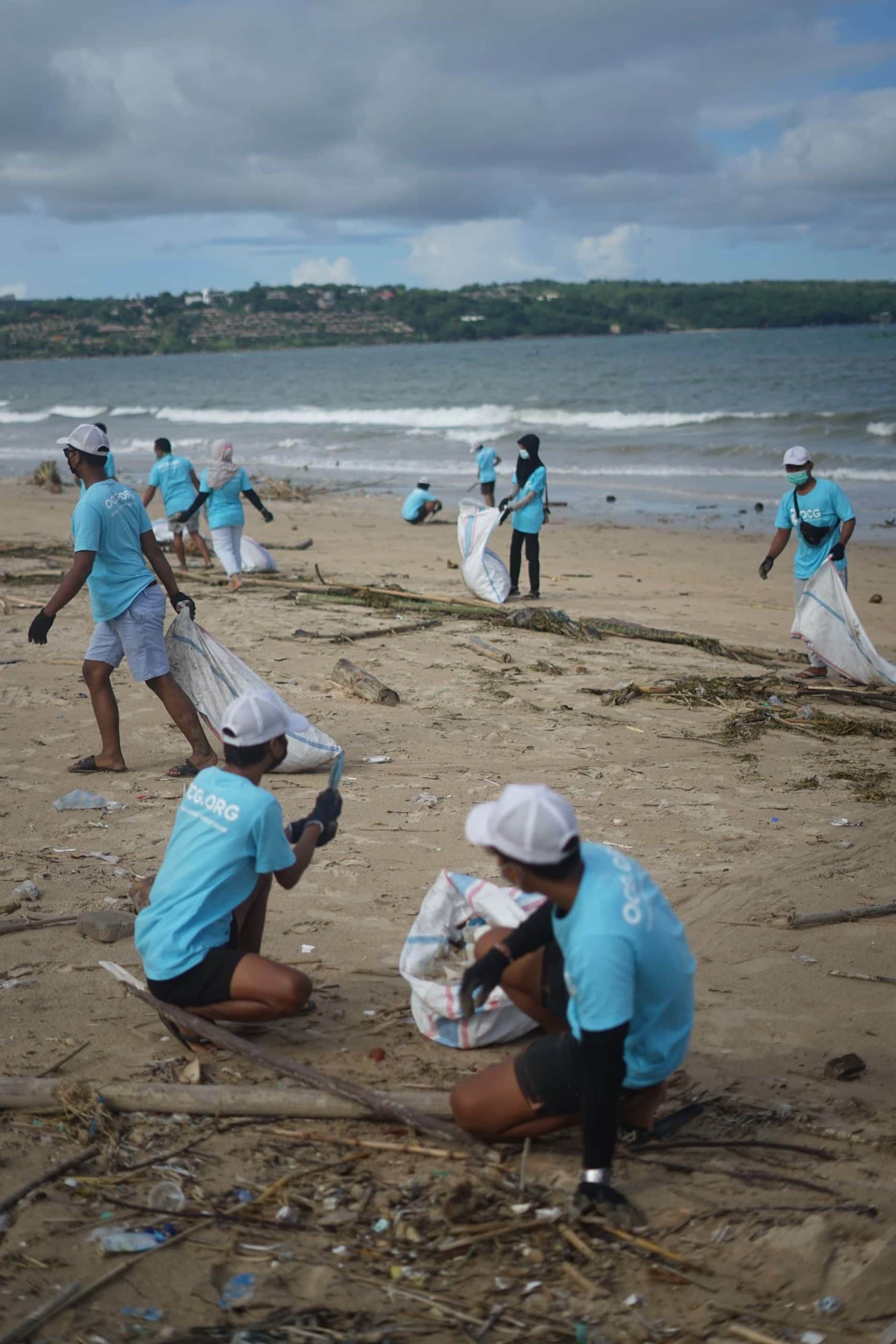

How Can You Reduce Your Plastic Usage?
As terrible as these ocean pollution statistics are, there is hope. Every person on the planet is capable of helping to reduce the amount of plastic entering the oceans and landfills. Even small changes can make a big difference, especially when millions of people begin making small changes.
Pushing for legislation at every level to force responsible manufacturing processes and eco-friendly alternatives will make a huge difference, but we have a long way to go.
- Use reusable eco-friendly shopping bags. Natural materials, like hemp and jute, are often the most eco-conscious picks.
- Choose biodegradable products, especially when it comes to products you use on a daily basis, like toothbrushes and doggy bags.
- When you are able, replace feminine hygiene products with reusable products, like menstrual cups and cloth pads. Also, consider using cloth diapers with washable liners to decrease plastic usage.
- Purchase reusable glass or metal water bottles instead of using plastic bottles.
- Drink tap water instead of bottled beverages and use your own bottles or cups when you’re able to reduce plastic produced by single-use cups.
- Replace your single-use plastic baggies with reusable options like silicone.
- Consider replacing baggies in your lunchbox with a reusable glass or metal bento box-style lunch kit.
- Choose loose fresh produce instead of bagged or packaged fresh or frozen produce.
- Avoid single-serving food items, like yogurt and hummus. Instead, choose products with multiple servings to a container.
- Purchase products in paper or cardboard packaging instead of plastic packaging whenever possible.
- Consider buying food items in bulk whenever possible and, if allowed by the store, use your own reusable containers instead of single-use plastic bags provided by the store.
- Invest in washable straws made from glass, metal, or silicone.
- Purchase reusable cutlery to keep in your office or vehicle to use for meals instead of single-use cutlery.
- Pick reusable items to keep food fresh, like beeswax-covered cloths, silicone, or glass or metal containers. Plastic wrap obviously contains plastics, but did you know that aluminum foil often contains plastics as well?
- Use items that are recyclable in your area.
- Take single-use plastic bags to recycling bins if available in your local grocery stores.
- Take your own reusable travel mugs to coffee shops if allowed instead of using their cups or lids.
- Avoid using plastic lids on drinks whenever possible.
- Avoid spending money with companies that are not making strides toward reducing plastic usage and becoming more eco-conscious.
- When buying items online from large retailers, opt to have your items packaged and shipped together when possible to reduce plastic packing materials.
- Choose products that don’t contain plastic microbeads, which are often present in products like facial scrubs.
- Choose products that don’t contain non-biodegradable glitter.
- Choose eco-conscious products that are also eco-friendly and don’t create a negative impact on the environment. Some eco-conscious products are manufactured in unsustainable ways.
- Research what products in your home are plastic and find more sustainable products to replace them. You might be surprised to find what items you use regularly that are made from plastic or contain plastic elements, like dental floss, gift bags, bandages, nail polish, chewing gum, and paper plates.
- Continue to use multi-use plastic products you already own for as long as is safe and feasible.
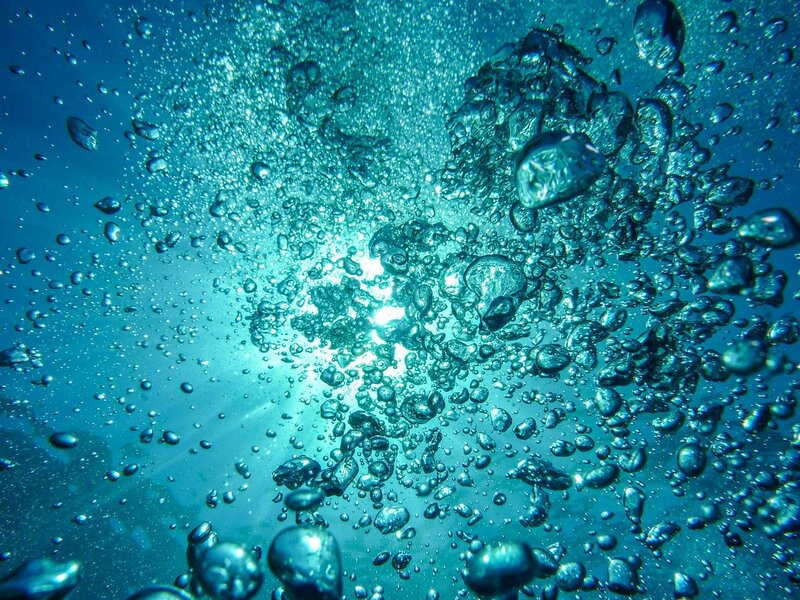

In Conclusion
At this point, a significant amount of irreversible damage has been done because of how much plastic is in the ocean. However, we can make changes moving forward. Pushing for legislative changes and making lifestyle changes can both make huge strides toward improving and reducing plastic pollution in the ocean.
Limiting our personal use of plastics, especially single-use plastics can make a major impact on the amount of plastic that ends up in landfills and oceans. It’s important to remember that the plastics we use never really go away. They will always be in the environment, damaging the ecosystem. By limiting our personal use of plastics and finding eco-friendly alternatives, we can all make a difference in reducing plastic pollution that makes its way into our oceans.
Looking for more of our top-rated articles? Try:
Featured Image Credit: Romolo Tavani, Shutterstock
